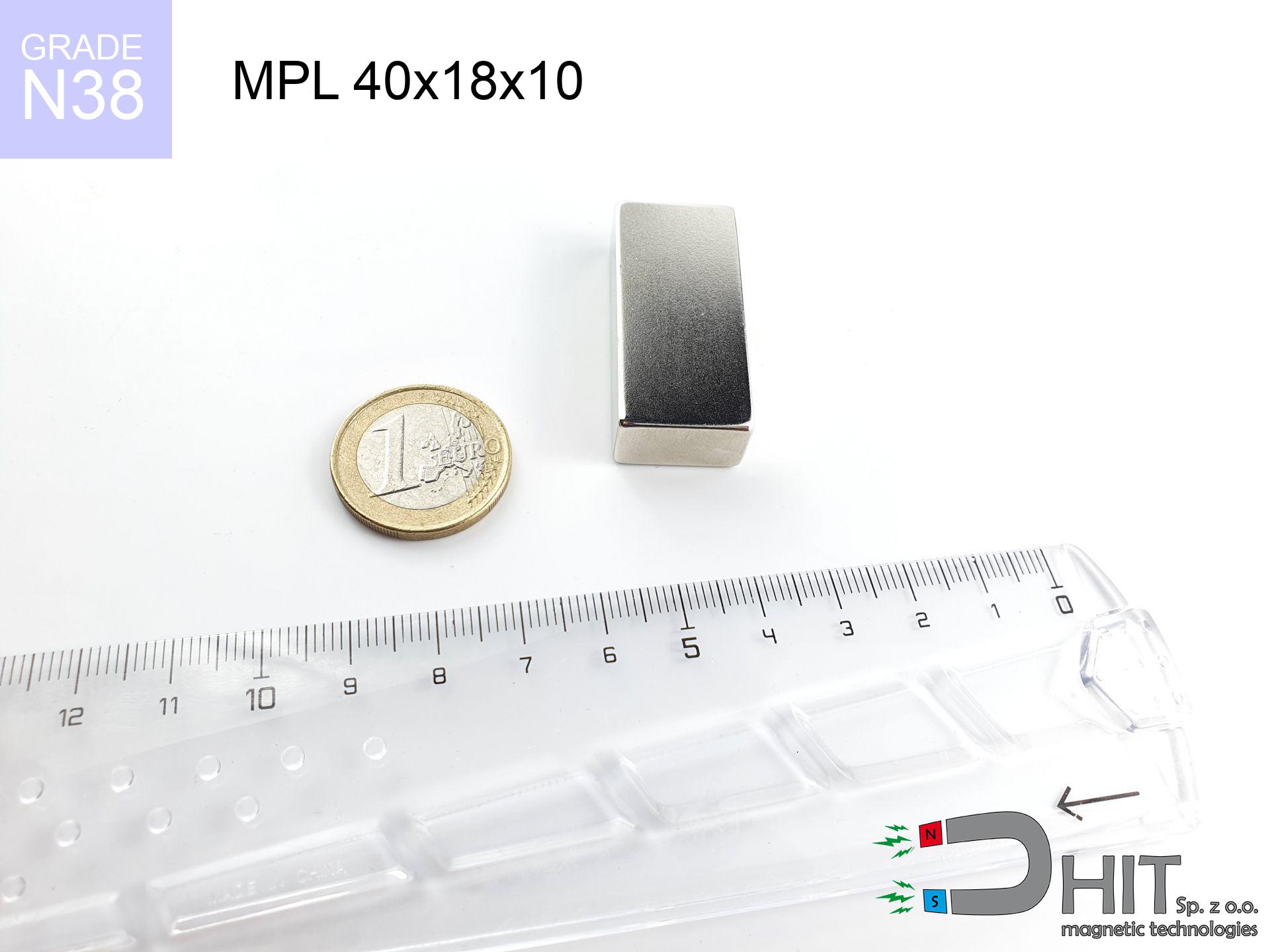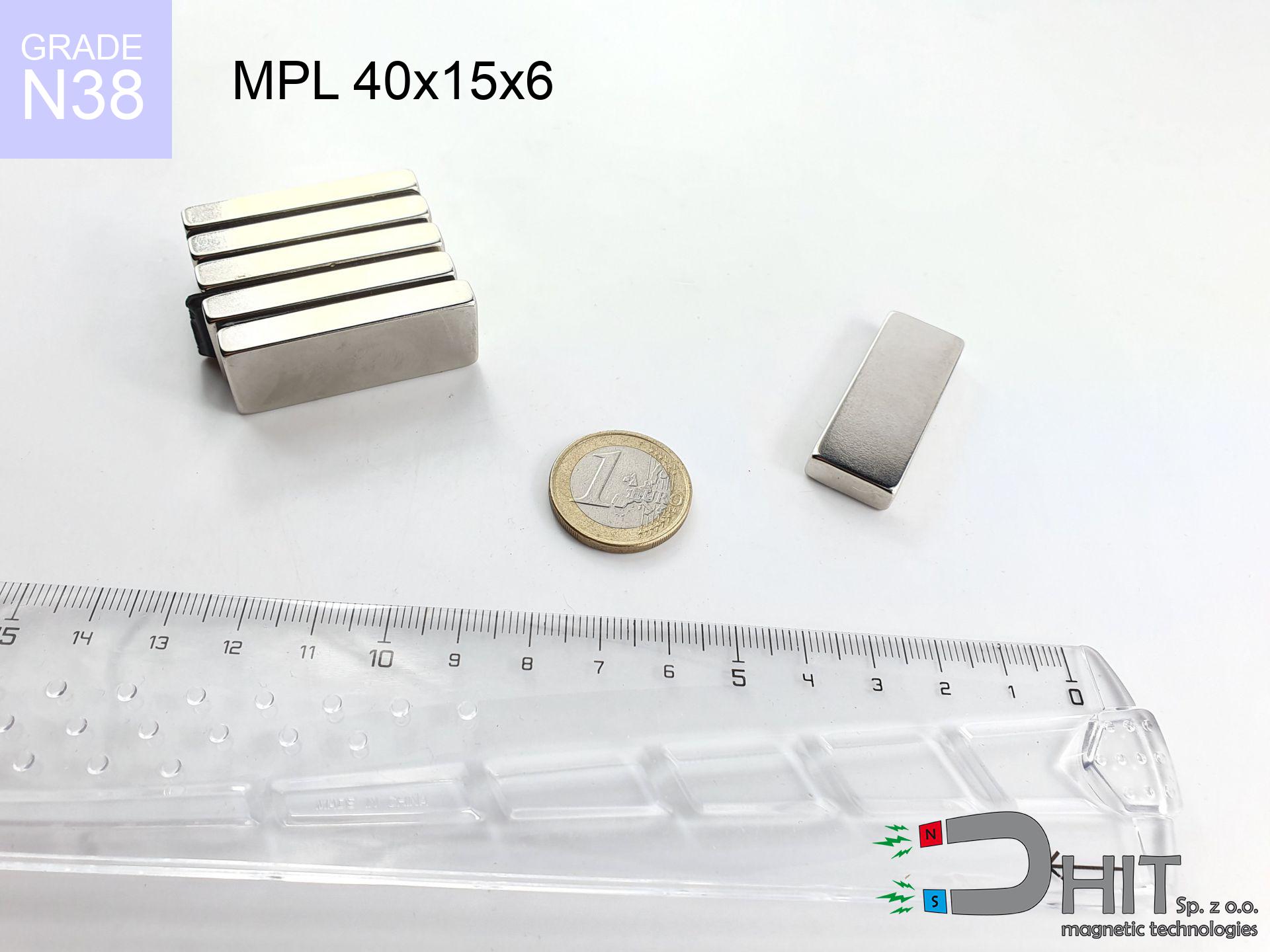HH 32x7.8 [M5] / N38
through hole magnetic holder
catalog number 370483
GTIN: 5906301814931
magnetizing direction
↑ axial
capacity ~
27.00 kg / 264.78 N
max. temperature
≤ 80
°C
catalog number 370483
GTIN: 5906301814931
magnetizing direction
↑ axial
capacity ~
27.00 kg / 264.78 N
max. temperature
≤ 80 °C
17.96 ZŁ gross price (including VAT) / pcs +
14.60 ZŁ net price + 23% VAT / pcs
bulk discounts:
need more quantity?Do you have doubts?
Give us a call tel: +48 22 499 98 98 or contact us through form on the contact page. You can check the mass and the shape of magnet in our magnetic mass calculator power calculator
Orders placed by 2:00 PM will be shipped on the same business day.
Specification: through hole magnetic holder 32x7.8 [M5] / N38 ↑ axial
Magnetic properties of the material N38
Physical properties of sintered neodymium magnets Nd2Fe14B
Compilation of suggested goods
Advantages as well as disadvantages of neodymium magnets NdFeB.
Apart from immense strength, neodymium magnets have the following advantages:
- They do not lose power over time. After about 10 years, their power decreases by only ~1% (theoretically),
- They are exceptionally resistant to demagnetization caused by an external magnetic field,
- Thanks to the shiny finish and nickel, gold, or silver coating, they have an aesthetic appearance,
- They possess very high magnetic induction on the surface of the magnet,
- Thanks to their high temperature resistance, they can operate (depending on the shape) even at temperatures up to 230°C and above...
- Due to the option of accurate forming and adaptation to individual needs – neodymium magnets can be produced in a wide range of shapes and sizes, which enhances their versatility in applications.
- Key role in the industry of new technologies – are utilized in computer drives, electric drive mechanisms, medical equipment or very modern machines.
Disadvantages of neodymium magnets:
- They can break as they are fragile when subjected to a powerful impact. If the magnets are exposed to impacts, it is suggested using magnets in a steel housing. The steel housing in the form of a holder protects the magnet from impacts and simultaneously increases its overall strength,
- Magnets lose their power due to exposure to high temperatures. In most cases, when the temperature exceeds 80°C, these magnets experience permanent reduction in strength (although it is worth noting that this is dependent on the shape and size of the magnet). To avoid this problem, we offer special magnets marked with the [AH] symbol, which exhibit high temperature resistance. They can operate even at temperatures as high as 230°C or more,
- They rust in a humid environment - during outdoor use, we recommend using waterproof magnets, such as those made of rubber or plastic,
- Limited ability to create threads or complex shapes in the magnet - the use of a housing is recommended - magnetic holder
- Potential hazard arising from small pieces of magnets pose a threat, if swallowed, which becomes significant in the aspect of protecting young children. Furthermore, tiny parts of these magnets have the potential to hinder the diagnostic process after entering the body.
We Recommend Caution with Neodymium Magnets
Under no circumstances should neodymium magnets be brought close to GPS and smartphones.
Magnetic fields interfere with compasses and magnetometers used in navigation for air and sea transport, as well as internal compasses of smartphones and GPS devices.
Do not place neodymium magnets near a computer HDD, TV, and wallet.
Strong fields generated by neodymium magnets can damage magnetic storage media such as floppy disks, credit cards, magnetic ID cards, cassette tapes, video tapes, or other similar devices. They can also damage televisions, VCRs, computer monitors, and CRT displays. You should especially avoid placing neodymium magnets near electronic devices.
Neodymium magnets can demagnetize at high temperatures.
Although magnets are generally resilient, their ability to retain their magnetic strength can be influenced by factors like the type of material used, the magnet's shape, and the intended purpose for which it is employed.
The magnet coating contains nickel, so be cautious if you have a nickel allergy.
Studies clearly indicate a small percentage of people who suffer from metal allergies such as nickel. An allergic reaction often manifests as skin redness and rash. If you have a nickel allergy, you can try wearing gloves or simply avoid direct contact with nickel-plated neodymium magnets.
Neodymium magnets are the most powerful, most remarkable magnets on the planet, and the surprising force between them can surprise you at first.
To handle magnets properly, it is best to familiarize yourself with our information beforehand. This will help you avoid significant harm to your body and the magnets themselves.
Neodymium Magnets can attract to each other, pinch the skin, and cause significant injuries.
Neodymium magnets bounce and also clash mutually within a distance of several to almost 10 cm from each other.
Neodymium magnetic are particularly delicate, resulting in shattering.
Neodymium magnets are characterized by significant fragility. Neodymium magnetic are made of metal and coated with a shiny nickel, but they are not as durable as steel. In the event of a collision between two magnets, there may be a scattering of fragments in different directions. Protecting your eyes is crucial in such a situation.
Neodymium magnets should not be around youngest children.
Neodymium magnets are not toys. Be cautious and make sure no child plays with them. In the case of swallowing multiple magnets simultaneously, they can attract to each other through the intestinal walls. In the worst case scenario, this can lead to death.
Neodymium magnets should not be near people with pacemakers.
Neodymium magnets produce strong magnetic fields that can interfere with the operation of a heart pacemaker. However, if the magnetic field does not affect the device, it can damage its components or deactivate the device when it is in a magnetic field.
Dust and powder from neodymium magnets are flammable.
Avoid drilling or mechanical processing of neodymium magnets. Once crushed into fine powder or dust, this material becomes highly flammable.
To raise awareness of why neodymium magnets are so dangerous, see the article titled How dangerous are very powerful neodymium magnets?.

![HH 32x7.8 [M5] / N38 HH 32x7.8 [M5] / N38](https://cdn3.dhit.pl/graphics/products/hh-32x7.8-m5-war.jpg)

![magnetic separator 25x325 [2xM8] / N42 magnetic separator 25x325 [2xM8] / N42](https://cdn3.dhit.pl/graphics/products/sm-25x325-2xm8-man.jpg)

![lamellar magnet 40x15x5x2[7/3.5] / N38 ↑ axial lamellar magnet 40x15x5x2[7/3.5] / N38 ↑ axial](https://cdn3.dhit.pl/graphics/products/mpl-40x15x5x27-3.5-cas.jpg)

